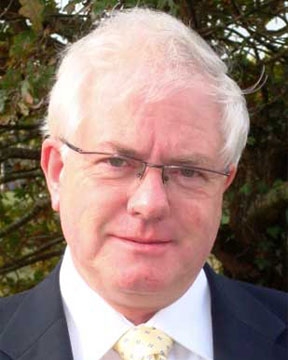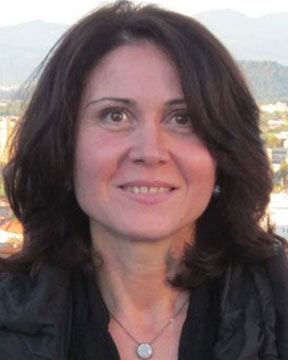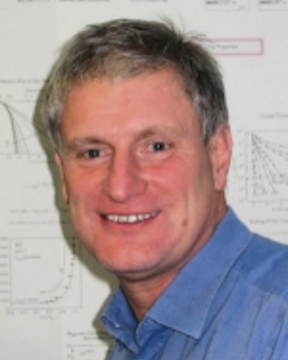< Back9th Intl. Symp. on Science of Intelligent & Sustainable Advanced Ferromagnetic and Superconducting Magnets (SISAM)

This
SYMPOSIUM and
ROUND TABLE topics will address 3 main concepts at large:
I. Alloys and Magnets:
- Magnetism and magnetic materials,
- Fundamentals of magnetism
- Spintronics
- Nd-Fe-B; RE-Co; Sm-Fe-N: processing & properties
- Raw materials, resources, mining, extraction & recycling
- Nanomagnetism and magnets with reduced dimensionality
- Rare earth free permanent magnets
- Modeling & measurements
- Coercivity & physical properties
- Microstructure & properties characterization
- Magnets applications
- Complex intermetallics,
- Magnetic compounds
- Spin glass magnets
- Large unit cell compounds
- Composites
- In situ TEM observation of magnetic nanostructures
- Amorphous and nanostructured alloys,
- Formation and stability
- Soft magnetism in amorphous alloys
- Additive manufacturing of duplex bulk amorphous alloys
- Applications
- Quasicrystals and aperiodic crystals.
- Aperiodic order(s) in Nature
- Aperiodic magnetic order and aperiodic magnetic compounds
- Rare-earth based quasicrystals
- Transport properties of aperiodic crystals and quasicrystals
- Surface nanostructures on quasicrystals and related compounds
- Surface chemistry of quasicrystals and aperiodic crystals.
II. Intelligent Materials:
- Computational Simulation of Intelligent Sustainable Advanced Materials (ISAM), including simulation of atomic and molecular structures, and of mechanical, thermoelectric, and magnetic properties
- H2-Storage Advanced Materials with emphasis on enhancing the storage kinetics with respect to dissociation, diffusion and trapping of hydrogen
- Amorphous Materials aiming at high stability and mechanical formability
- SPD Nanomaterials aiming at the principles to increase the ductility at still high strength
- Advanced Thermoelectrics optimizing the efficiency by constraints and defects
- Magnetic Materials, including advancements of coercivity and magnetostriction by means of exchange coupling mechanisms
- Advanced Biomedical Materials achieving case-dependent mechanical & biocorrosion properties
- Semicrystalline Polymers, with special emphasis on the role of dislocations for macroscopic strength
- Current Intelligent Sustainable Advanced Materials like Graphene, CNTs, High Entropy Alloys
- ISAM Industrial Applications, and the trend of increasing commercialization of materials (amorphous & nanocrystalline materials, magnetic materials, and others)
- Nano-Analytic Methods comprising diffraction line profile and texture analysis, including Synchrotron and neutron radiation, dilatometry, and positron annihilation spectroscopy
III. Surfaces and Interfaces:
- Formation, preparation and stability of surfaces, interfaces, and grain boundaries
- Characterization of surfaces, interfaces and grain boundaries of metals, alloys, oxides and semi-conductors
- Solid-liquid interfaces, including biological surfaces and interfaces
- Surfaces, interfaces and grain boundaries of nano-objects and nano-particles
- Architectured and nanostructured materials
- Thin films and coatings
- Supported nano-objects
- Advanced microscopies of surfaces and interfaces (Transmission electron microscopy, Atomic Force Microscopy, Scanning Tunneling Microscopy)
- Experimentals and instrumentation
- Theoretical tools, models, codes
To download Flyer, click on the icon:

 Click here to submit an abstract and choose 9th Intl. Symp. on Science of Intelligent & Sustainable Advanced Ferromagnetic and Superconducting Magnets (SISAM) in the list: https://www.flogen.org/sips2025/abstract_submission.php?p=35#content_topClick here to see the General Author Invitation: https://www.flogen.org/sips2025/invitations/SISAM_General_Author_Invitation.htmlClick here to see the Social Media Text: https://www.flogen.org/sips2025/socialmediatext/SISAM_Social_Media_Text.htmlClick here to see other resources for this symposium: https://www.flogen.org/sips2025/symresources.php?sym=42Click here to view the list of abstracts for this symposium: https://www.flogen.org/sips2025/technical_program.php?a=a1d0c6e83f027327d8461063f4ac58a6Click here to submit abstract: https://www.flogen.org/sips2025/abstract_submission.php
Click here to submit an abstract and choose 9th Intl. Symp. on Science of Intelligent & Sustainable Advanced Ferromagnetic and Superconducting Magnets (SISAM) in the list: https://www.flogen.org/sips2025/abstract_submission.php?p=35#content_topClick here to see the General Author Invitation: https://www.flogen.org/sips2025/invitations/SISAM_General_Author_Invitation.htmlClick here to see the Social Media Text: https://www.flogen.org/sips2025/socialmediatext/SISAM_Social_Media_Text.htmlClick here to see other resources for this symposium: https://www.flogen.org/sips2025/symresources.php?sym=42Click here to view the list of abstracts for this symposium: https://www.flogen.org/sips2025/technical_program.php?a=a1d0c6e83f027327d8461063f4ac58a6Click here to submit abstract: https://www.flogen.org/sips2025/abstract_submission.phpCHAIRS

Dr. Jean-Marie
DuboisProfessor
Jožef Stefan Inst.Slovenia,
[Bio]

Dr. Mariana
CalinProfessor
IFW DresdenGermany,
[Bio]

Dr. Ludwig
SchultzProfessor Emeritus
TU DresdenGermany,
[Bio]

